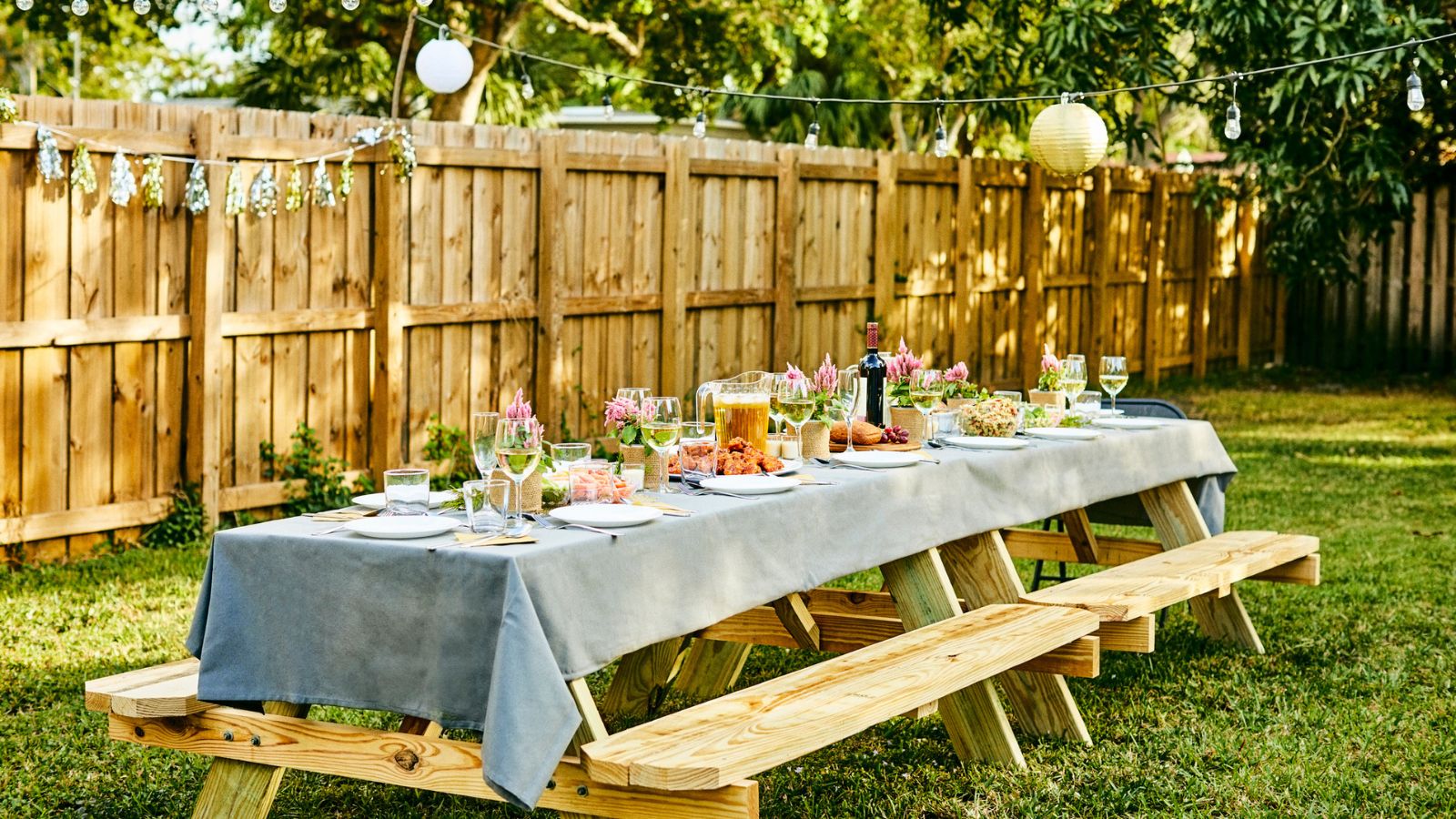Who actually owns my fence? Advice from a real estate attorney on how to get clued up on the law
It's not always clear who owns a fence dividing two yards. We offer advice on how to find out


Disclaimer: This article does not constitute legal advice and is for general information purposes only. Always consult a local or state lawyer before challenging any fence boundary disputes.
The old cliché is that good fences make good neighbors, but there's a slight hitch with that received wisdom. A good fence might make for good neighborly relations, but which of the two parties actually owns it?
Disputes about fences and boundaries are one of the most common causes of arguments between neighbors, and if a fence snaps or blows down, it's not always clear whose responsibility it is to fix it.
Unfortunately, there's no easy answer. Fence ownership and boundary marking is subject to a patchwork of different laws and conventions across the United States. I spoke to a real estate legal expert about the wide variety of different laws and how they impact on your responsibilities as a homeowner.
What are the laws on fences?

The unfortunate thing about fencing laws is that they vary from state to state and even county to county. There's no straightforward federal law about fencing - it is very much a local issue.
For example, in New York, boundary fences should be erected on the lines of the property, and ownership and maintenance of the fence is split between the two owners on either side of the fence.
Texas, on the other hand, has no specific laws governing fence ownership. However, cases in the state have set a precedent in which a landowner on one side of a boundary fence has no obligation to maintain a fence erected by the landowner on the other side unless they have agreed to do so. In California, there is a specific Act regulating fences, the Good Neighbor Fencing Act, which stipulates that the costs of erecting and maintaining a fence are split between the landowners either side of the fence.
Design expertise in your inbox – from inspiring decorating ideas and beautiful celebrity homes to practical gardening advice and shopping round-ups.
Attorney Mindy Stern told me that 'Laws about fence issues are local, not national. Each state, and often each municipality, has laws that govern who owns them, where they can be located, and what they look like. There are too many nuances to succinctly summarize every state and local law and regulation.'

Mindy H. Stern, a partner of the firm, concentrates in real estate, estate planning and estate administration. Her real estate practice includes sales, acquisitions, leasing and financing on behalf of for profit and non-profit entities, public companies, and individuals. Ms. Stern is a former Chair of the Real Property Law Section of the New York State Bar Association, and is a member of that Section’s Executive Committee.
How can you tell if the fence is yours?

The rules are more straightforward when it comes to building fences. Usually, the party who erects the fence is responsible for maintaining it. But it's more complicated if you buy a home with a fence already installed. In this case, you'll need to do some digging.
Responsibility can depend on where the fence lies. If the fence falls on the boundary line, it's typically the responsibility of both landowners either side of it. If it sits on either side of the boundary line, ownership and responsibility falls to their person whose land the fence sits.
Mindy Stern says 'If you buy a property with an existing fence and your seller doesn’t know who owns it, you may be able to figure that out by asking the neighbors, reviewing surveys, or checking records in the local building department, old surveys, or other public documents.'
However, it's important that you establish these boundaries and ownerships. If you don't have this sorted, you could end up losing land. Mindy warns that 'if you don’t have a boundary agreement with a neighbor that permits the fence but each party acknowledges where the ”real” boundary is located, at some point the neighbor could claim “adverse possession” of the portion of your land that’s now inside the fence on the neighbor’s land.'
Can I paint the side of the fence in my yard?

It depends on local laws and on boundary lines. If the fence falls a couple feet in your neighbor's yard, it is unlikely you can paint it without permission, because it's technically on your neighbor's property, even if its actual use is to mark out two yards.
However, if you live in a state or country in which fence ownership is shared between the two landowners, you can paint the side of the fence in your yard however you want. If you're treating your side of the fence with wood sealant or preserver, so much the better, because you're fulfilling your obligation to preserve the fence. Just remember to inform your neighbor before you do anything.
On top of that, you should also consider that local law may stipulate how high and what color your fence can be. Furthermore, you may also be subject to homeowners' association rules which govern the style of fencing in your neighborhood.
All of the above also applies to installing fence post toppers or even cheap post lights like these from Walmart. If the law says that you and your neighbor share the fence, you'll need permission to do anything to it that both of you can see.
What if my neighbor puts up a fence I don't like?
A final consideration are so-called 'spite fences'. A 'spite fence' is a fence erected to be an inconvenience. In extreme cases where two neighbors have a disagreement, one neighbor might put up a fence designed to be annoying - in a lurid color, or overly high. Some places have laws against spite fences, for example, in New York. Mindy says that in New York, 'If the fence is more than 10 feet high and was built to deprive you of light or air, it can be deemed a private nuisance.'
However, this doesn't apply to any fence. If a neighbor installs a fence on their side of the boundary, obeying all local ordinances and HOA rules, there's basically nothing you can do - it's their private property and they can do as they like.
For more help with fencing and the law, take a look at my guide to whether or not you can build a pergola next to a neighbor's fence.

As a gardens and lifestyle contributor, Alex makes sure readers find the right information to help them make the best purchase. Alex got his start in reviewing at the iconic Good Housekeeping Institute, testing a wide range of household products and appliances. He then moved to BBC Gardeners’ World Magazine, assessing gardening tools, machinery, and wildlife products.


